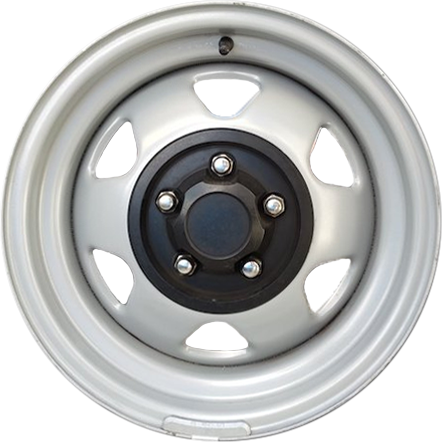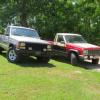
Oyaji
Members-
Posts
575 -
Joined
-
Last visited
Recent Profile Visitors
998 profile views
Oyaji's Achievements

Comanche Addict (5/10)
-
Original Instrument Cluster Check?
Oyaji replied to Mancheguy's topic in MJ Tech: Modification and Repairs
V6?? You meant "I-6", right? ;) -
http://comancheclub.com/topic/41036-retired-stormtrooper/?p=414630 :)
-
Any acreage is good, more is better, and a good fence better still. Put up a gate and a sign, too, and you can shoot trespassers (in some states, anyway, I am told) if you are so inclined. :D
-
I am impressed. A half mile driveway implies your home is in the middle of your property, which would be a mile across. Since a square mile (1 mile X 1 mile) is 640 acres, I sure would hate to have to mow your yard! Maybe you have cattle for that? :)
-
91' With Camper - Suspension Upgrade?
Oyaji replied to Comanche Camper's topic in MJ Tech: Modification and Repairs
O hell yeah! Looking forward to seeing both the stills and the video you have captured. I've always been curious as to what the Pacific NW have to offer for a surfari. Though I have been to 11 countries and sailed and surfed the Gulf of Mexico, North Atlantic, Caribbean Sea, North and South Pacific, and the Indian Ocean, I never have gone north up the west coast above San Francisco. I always thought the water is too freaking cold up there! -
You growing your whiskers out now?
-
How about WJ LCAs? (I know - it's bent a little...) http://jeep-xj.info/HowtoWJcontrolarms.htm
-
4.0 Single Port Injectors Vs Neon Four Port Injectors
Oyaji replied to airspeed's topic in MJ Tech: Modification and Repairs
That there is some good advice. The only thing that might be better would be getting injectors that have been matched for flow, though considering modern quality control even that might be debatable. (Does anyone know the permissible flow spec deviation, that is, ± what % of flow is acceptable, for new injectors? If you do, chime in, please.) Flow-matching services on Ebay claim as good as ±0.5% for their offerings, which are old injectors cleaned, grouped for the amount they flow in a test fixture, painted, packaged, and shipped. One of our members here (who hails from Attala, AL iirc, but I forgot his name) recently had a problem with one of those services - maybe he will offer some advice on which outfit to avoid. -
Actually, there IS a way to know that: by analyzing the exhaust gas from each cylinder individually. By analyzing the exhaust gas you can determine not only constituent gases in the burn, but also by inference determine the fuel efficiency and power too... and do it with incredible accuracy (within a tenth of a percent). [Note that this level of accuracy requires laboratory-grade equipment (Clayton steady-state eddy-current dynamometer and Horiba exhaust gas analyzer for starters, these days probably $2+million per test cell).] However, for the private enthusiast I reckon a setup with an oxygen sensor for each cylinder would return good results at an affordable price, if you absolutely just had to calculate the power for each cylinder. But practically speaking, I reckon just reading the plugs and using a single oxygen sensor is good enough: in the case of carbs you can know the amount of air to each cylinder is matched, in the case of fuel injection you can know the fuel to each cylinder is matched, and for either fuel system the plug color will give you a good idea about the quality of the burn of of the intake charge. ... Here's the big thing: the hard part about making power isn't getting fuel into a naturally-aspirated engine, it's getting the air in... and that is where an individual runner intake manifold is going to shine. The next limiting factor will be what the head will flow... and with just 2 pushrod-actuated valves per cylinder, that is going to be a real problem that makes forced induction increasingly attractive as you approach the breathing limit of the engine.
-
Webers go back, 'way back, into automotive history. There is a "cool factor" there that just cannot be quantified... and if you want that, well, there just ain't no substitute. They are also extremely tunable... provided you have (or have access to) a complete set of factory jets. A complete jet set costs more than the set of carbs (or at least they used to). To do a good job of tuning these carbs, you'll also need a mercury tube manometer (I made my own 4-tube manometer - it was extremely hard sourcing the mercury back 20 years ago, doubtless much harder post-9/11), a bajillion spark plugs or a bead blaster to clean them between trial runs (so you can read the deposits on the plugs for cues as to mixture settings), and an exhaust gas analyzer or surrogate thereof (a budget-conscious alternative is a fuel-air meter that uses an oxygen sensor for data source). You'll also need a guide or a book, a light touch with basic hand tools, ability to follow "recipe"-like directions, and patience. It's doable. Properly tuned, Webers offer good driveability over the entire RPM range. It's just that that "properly tuned" part is seldom achieved to its full potential (probably because of cost), and thus 1-barrel-per-cylinder individual-intake-runner setups get a bad rap. If you want to step into this century instead, digital engine management offers greater potential, particularly for economy. Whereas a superlative carburettor setup can unleash the full power potential of an engine, it burns more gasoline to achieve it with poorer driveability than what you can get with fuel injection. However, the learning curve is even steeper for learning all aspects of digital engine management so that you can do custom programming than it is for a 6-barrel individual runner setup such as you contemplate! :) I guess that if you are the type who enjoys the learning experience at least as much as the final product, the journey as much as arriving at the destination, then you'll get enjoyment either way you go. As an aside, you might take note that I will one day pull the primary venturis (chokes) from my Webers, block off all passages besides the throttle-plate throats, machine injector mounting bosses in my individual intake runners, and adapt a home-made fuel injection system to my engine. It will be cheaper to use the Webers for throttle bodies than to buy or make alternatives. Having enjoyed them in their current state, it will one day be time to move on to the higher performance afforded by digital engine management... and if I get nostalgic, I can always roll back to their original function.
-
Especially when they came directly from the chief engineer of R&D at Porsche GmbH. :)
-
Yes. Back when most makers were proud to get 75% volumetric efficiency from their offerings, Porsche was able to hit 105% using "pressure wave supercharging" by utilizing tuned intake stacks. :)
-
Considering your screen name, it figures that you would be impressed! I like 'em too... so much that when I get around to it, I'll make some 2-foot velocity stacks to boost mid-range power on my flat-4...
-
My entire post was direct and to the points raised by the OP.
-
Over Heating With No Start After
Oyaji replied to 92tanMJ's topic in MJ Tech: Modification and Repairs
If you had marginal antifreeze for the extra-cold temperature that day, your radiator could have frozen while driving, blocking coolant flow and causing the engine to overheat. Regarding the starter problem, if tapping on it nets no results, turn the engine a bit by hand and try the starter again - sometimes the starter gear is off just enough to not want to engage the flywheel, and a lilltle movement is all that's needed to get it to engage properly. If still no-go, check the connections all the way down the current path to the starter, both positive and ground (including the starter mounting). Once you have the starter able to turn the engine, if it still won't start, it's time to troubleshoot - and don't skip a compression check. You might have gotten it really hot...



